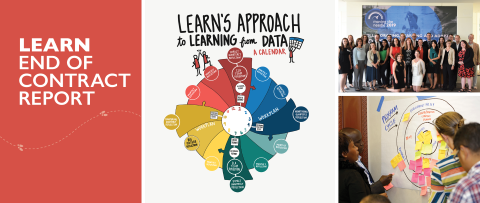USAID LEARN End of Contract Report

In September of 2014, USAID’s Office of Learning, Evaluation & Research (LER) awarded the Learning and Knowledge Management (LEARN) contract to Dexis Consulting Group and subcontractor RTI International. This document—the End of Contract Report—captures five and a half years of results and reflections for our stakeholders. The intention of this report is to share the good and the bad, and while this report would not be considered a “tell all,” we think we have a story worth sharing, particularly to USAID CORs and AORs, activity managers, and other implementers of institutional support contracts.
LEARN’s primary purpose was to support organizational change at USAID. More specifically, the contract was focused on helping USAID staff integrate collaborating, learning, and adapting (CLA) approaches into the design, implementation, monitoring, and evaluation of programs (what is known at USAID as the Program Cycle). It was clear that most USAID staff, whether they realized it or not, were already integrating CLA into their work to some extent. The focus of our efforts, therefore, was to make those practices more systematic, intentional, resourced, and ultimately more widespread throughout the Agency, which would have a ripple effect on implementing partners and even other stakeholders, such as host country governments. This was based on the theory—later borne out by evidence—that by becoming a better learning organization, USAID could be a more effective development organization. And that theory brought the USAID CLA team within USAID’s Bureau for Policy, Planning & Learning (PPL) and LEARN contractors together, driven by a shared purpose of improving how USAID does business.
LEARN was designed based on this belief and, as you might expect from a learning-oriented contract, began with more questions than answers. Primary among those questions was: could an institutional support contract do more than carry out requested services—could it actually accelerate positive organizational change at USAID? And if so, how and under what conditions? This report strives to answer these questions and the many related sub-questions:
- What changes did LEARN contribute to at USAID? Who created the changes? How did they come to be? And what enabled those changes?
- How did we operate internally as the LEARN contract and with our clients to affect change in the wider USAID system?
Read the full report to find out more.



